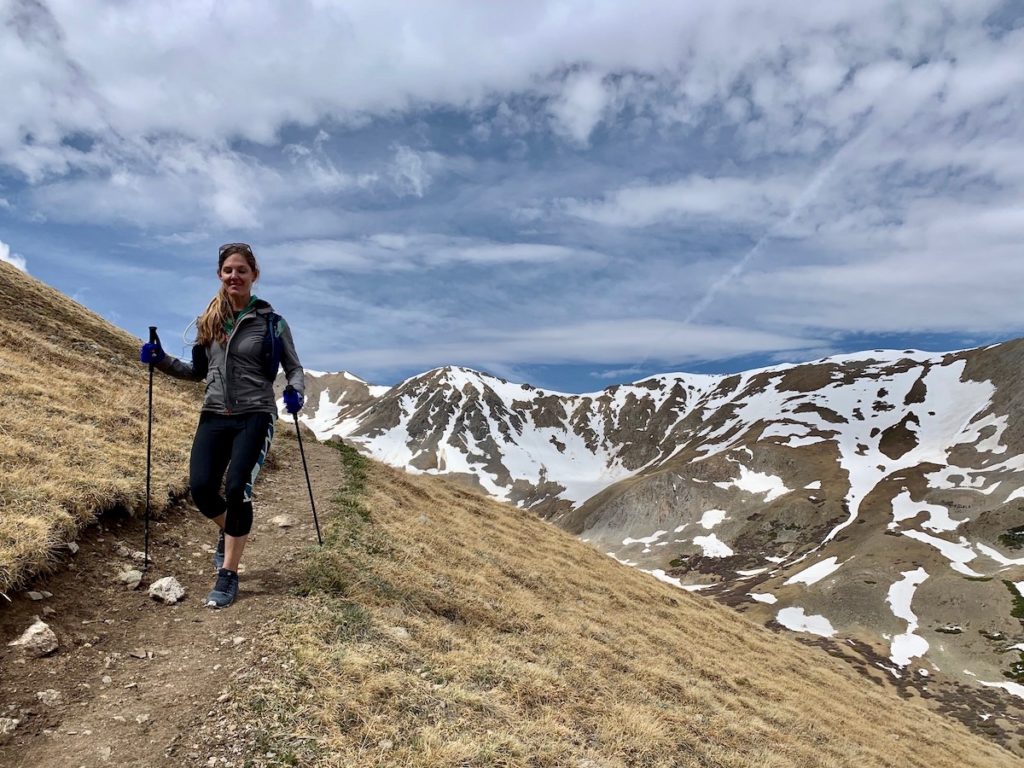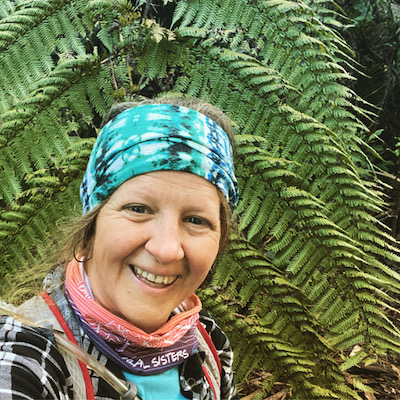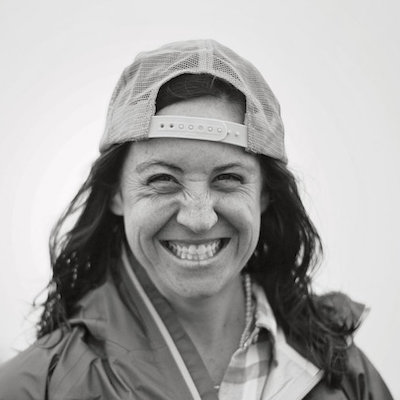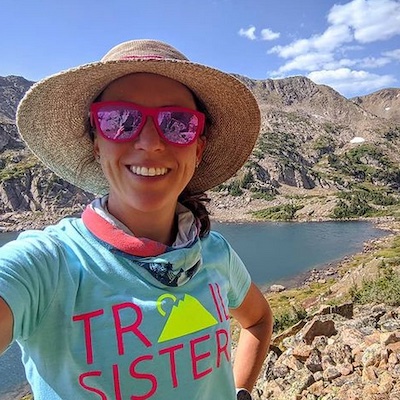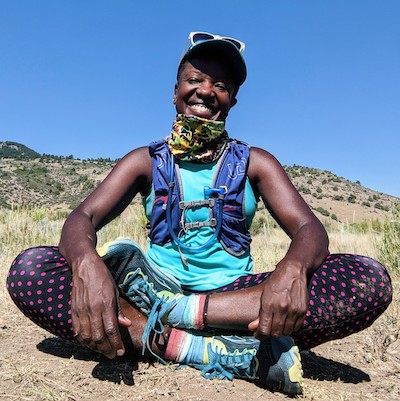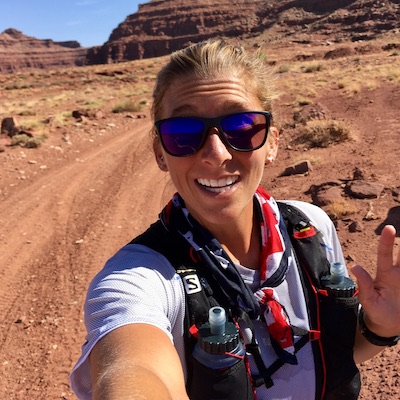The Panel of Experts from Ask the Trail Sisters answer your questions!
Learn more about the panelists and ask a question!
I see lots of people using them, both in hiking and trail running, and I’m thinking about getting some. Are they mainly used for going uphill, and is there a technique to using them?
I don’t know why I waited so long to get poles, but I tried them at a mountain running camp and loved them! I have generally used them for longer than 50K distance, unless it’s got a lot of steep elevation or scree (gravelly terrain). Figuring out where to stow them on your pack so you can easily access them is key. I use them for both uphill and downhill. The more you practice with them, the more you develop a rhythm and a cadence (mine is: opposite foot/pole striking simultaneously). Uphill, you have a bit more leverage to use your arms to help with climbing. Downhill, you can gain a bit more stability on scree or slippery snow/mud.
There’s definitely a technique, but it comes naturally when practicing with them. I use mine for steep inclines on longer (to me) efforts, as well as technical descents. They are in existence to offer energy conservancy, if used correctly.
I have used poles and found they benefitted me on both uphill and downhill. I found they took a lot of the load off my knees and quads on the downhills, while assisting in getting me up the steeper hills. Poles used in trail running are collapsible and many hydration vests have straps to secure poles for times on the run when you decide you don’t need them, so over flat terrain they can be stored, and your hands remain free. I think for steep, technical terrain poles are definitely a plus, and help save your legs during your longer adventures.
It’s really a matter of personal preference whether you should use poles or not. Some people love them, some hate them. Some only use them for uphills, other people really benefit from using them on downhills. It all depends. Personally, I typically prefer to use my hands-on-quads power hike than poles but I have used poles for multi-day races when the fatigue compounds. When I do use poles I’m very aware that I eat/drink less because my hands are full and that poles encourage me to walk sections that I really should run so I try to be intentional about putting the poles away when I don’t need them and then take them out when it’s beneficial to have them. Give them a try for yourself and see how it feels.
There is a technique to using poles and I think you learn them the more you use them! they are useful on both the uphill and downhill. You can double pole or use them as if you are running with a normal arm swing. The main thing is to practice using them during your training runs.
I’ve personally found poles to be helpful in a few scenarios: 1) a mountainous race with lots of steep terrain; 2) fast packing longer routes; 3) during recovery from pelvic injury. I don’t use them all the time, but the key is that when I’m planning to – I start training with them. They should feel like a natural extension of your body and a way to use your upper body to assist you – technique will come with practice, as will the upper body strength to let them be helpful and not a hindrance. In racing, they are mainly used for uphill – but they can be an effective tool for descending loose terrain, relieving the load on long downhills while carrying a heavier pack, and for returning to hiking after injury.
It depends on where you want the support. Some studies suggest poles can absorb up to 25% of body weight, which helps the knees and hips over a long effort. Poles can also improve balance and stability, keeping you upright when crossing creeks or navigating tricky passages. If you’re looking for more of an upper body workout, adding poles can help with that too. Regarding technique, it depends on whether you’re hiking or running. I sometimes use them for both, especially on longer climbs. There are different kinds of poles out there, so I’d suggest to start with an inexpensive pair to start (appx. $20), take them out with you regularly, and see if you like them before making a bigger investment.
I enjoy using Black Diamond poles for both running & hiking. While I run, I use my poles for steeper up hills. During hikes I’ll use poles for both the uphill and downhill but using the poles on the downhills really helps to take pressure off my knees. I found over time the more I use the poles the better my technique has got. In the beginning it felt funny, unnatural and my arms would hurt but in time the poles became a fluid motion when I move along the trails.
Poles are great for runs or races that have a lot of climbing, or for really long adventures when your legs might prefer to share the workload. They are mainly useful on uphills when you are hiking, but can absolutely be used on technical downhills as extra points of contact with the ground to increase stability. When using poles on an uphill, you’ll keep your arm swing the same as if you weren’t holding them – left arm/right leg, right arm/left leg. The goal is to plant the pole and push off as your opposite leg pushes off, adding more oomph to your hiking. I recommend pulling up some videos online if you need a visual, and then to just go out and practice with them. Practicing helps make it feel more natural.
As an east coast trail runner, I haven’t felt a need for poles in our local mountain races. We do have technical trails where poles would be helpful in slick conditions, but our lack of vertical just doesn’t demand a high use of poles. That said, there are many people who swear by them and feel they help them with technical descents and steep climbing. I have used them when pacing at Hardrock and racing the Never Summer 100k, both races that travel over 10,000 feet, and I definitely felt a benefit. The issues were more about stowing them comfortably and easily when not in use, and making sure they fit you properly. Practice using them in training, folding and stowing them while moving, and getting into a good rhythm on the climbs and the flats.
I use them for steep uphills. I can save some energy while going up the hills, and also I feel like I can find a good rhythm with more power in my legs by using poles. My poles are light weight and fold into 3, so I can put them in my pack or hold in my hands to run fast down hills. If the downhills are rocky, muddy, water crossing, or technical terrain, the poles can be useful to balance and reduce some impact on your joints. You may want to practice and comfortable with them before running with them in a race or big hike.



